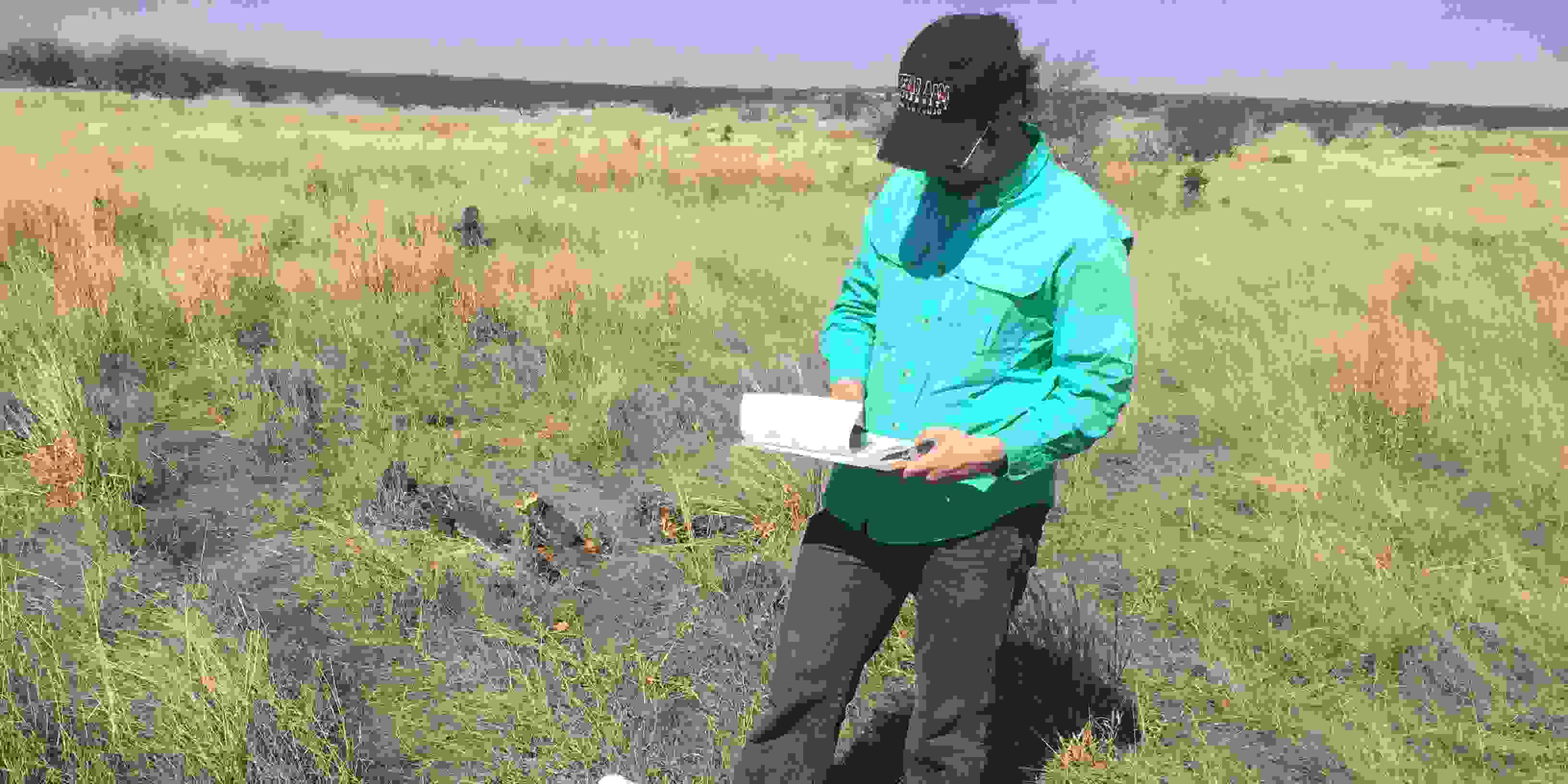In rural areas of South Texas, oil and gas pipelines, well pads and related road construction cut across miles of countryside and privately owned land. Based on years of observation, researchers have believed oil and gas development activities reduce the land’s native biodiversity and increase invasive species distribution, but they had not yet collected measurable data to support those observations.
To evaluate and quantify the possible association between oil and gas development and invasive species cover, researchers from the Texas A&M Institute of Renewable Natural Resources (IRNR) sampled grass distributions in a privately owned ranch in Dimmit County, Texas.
The team, consisting of Forrest Cobb, IRNR research assistant; Forrest Smith, the Dan L. Duncan endowed director of South Texas Natives and Texas Native Seeds; and Dr. Susan Stuver, former IRNR senior research scientist, determined there is an association between well pads and invasive grasses.
“From the data we’ve collected, we know the total nonnative grass species cover was greater within 63 meters of well pads than in the surrounding areas,” Cobb said. “The main objective was to try to quantify a relationship that has been assumed and observed in the past, and use that information to develop solutions in the future.”
The team sampled well pad sites on the 13,000-acre ranch, using an assessment known as the Daubenmire method. They assessed invasive grass coverage at five different distances from the well pads to determine if there were any changes in distribution. Measurements were also taken at control points, away from the well pads, that had similar ecosystems, and the team compared the different sites’ invasive species coverage amounts.
“The project goal was part of a larger effort to evaluate possible control methods for invasive species,” Cobb said. “There’s an assumption that industrial activities are probably increasing invasive species spread, but until it’s quantified we can’t really state it, and we also can’t measure it in a way that allows us to take action.”
Invasive species are defined as noxious, nonnative species and are one of the largest contributors to plant and animal extinctions in the United States, he said. Because severe invasions can decrease crop yields, degrade water quality and reduce biodiversity, invasive species are considered a significant ecological and economic threat, he said.
“The most important thing about invasive species from a conservation perspective is they displace wildlife habitat,” he said. “They do this by essentially crowding out, or displacing, native plant species that would provide habitat for all sorts of wildlife.”
Many invasive plants are also highly fire-adapted, meaning they burn quickly and grow back faster than most native species after fire.
“They can both create the fire and then spread faster because of the fire,” Cobb said. “It can create a compound effect.”
Some of the most common invasive grass species in South Texas include buffelgrass, Lehmann lovegrass and Kleberg bluestem. Many were planted intentionally in the 1950s to improve forage for cattle but have now spread and threaten biodiversity and wildlife habitat, he said.
While most industrial activities cause significant land disturbances, Cobb said oil and gas development may spread invasive species more than other industries. The reason, Cobb said, is that oil and gas development uses equipment transported from various locations, develops large-scale projects such as pipelines and road construction, and frequently builds on rural or undeveloped land.
Nonnative grasses can spread through human activities, such as vehicle traffic, Cobb said. However, they also tend to colonize areas after environmental disturbances. Well pad construction creates major soil disturbances and makes environments more conducive to invasive species growth, he said.
Invasive species management strategies were outside the scope of the study, but Cobb said it is important to note prevention is the preferred choice for land management.
“If you can prevent introduction or prevent encouraging invasive growth, that’s going to be better from a conservation standpoint,” he said. “It’s also going to be better from an economic standpoint, as it costs you a lot to remediate or try to remove these invasive species later.”
Removing or preventing nonnative species growth from developmental areas on private land is an issue decided between landowners and oil and gas operators, he said. Industry operators may be held liable for the introduction or spread of invasive species, depending on the specific land use agreement.
“If a landowner is concerned about invasive species as a land management issue, then it comes down to the kind of agreement a landowner has between an oil and gas company,” Cobb said. “That becomes a legal situation.”
For more information on IRNR’s energy related research, visit irnr.tamu.edu/what-we-do/energy/.

